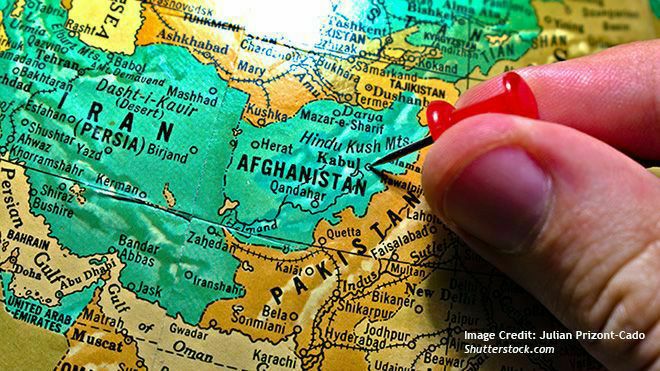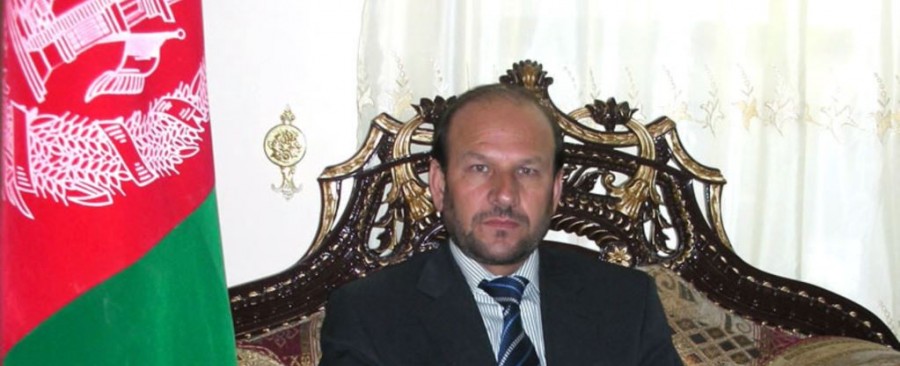The Evolution of Sino-Afghanistan Ties in the Post-U.S. Withdrawal Period
The ongoing targeted attacks against Chinese nationals and assets in neighboring Pakistan have demonstrated the need to cautiously approach strategic investments in South Asia. Ultimately, a cooperative Sino-Afghanistan relationship can only accelerate if the security conditions permit greater stability in an already volatile nation marked by generations of internal strife

Introduction
In the wake of a precipitous U.S. withdrawal from Kabul, security challenges continue to take precedence in Beijing’s strategic calculus vis-à-vis Afghanistan to secure a larger foothold in Central Asia. Referred to as the “graveyard of empires,” Afghanistan has suffered over four decades of conflict, with relative stability enjoyed during the mid-2000s. The South Asian nation is once again under Taliban control – this time with greater Chinese involvement. In the months leading up to Washington’s departure, Beijing quickly ramped up its high-level visits, promised to incorporate Afghanistan in its flagship China-Pakistan Economic Corridor (CPEC)-related undertakings, and kept its diplomatic mission open alongside Iran, Pakistan, and Russia.
To China, Afghanistan offers opportunities for investments to stabilize a volatile region to address its security concerns over Uyghur separatism in Xinjiang – the only shared border with its land-locked neighbor. For the Taliban, the Chinese Communist Party (CCP) leaders offer a way to potentially modernize a war-torn nation to gain increased political legitimacy and ward off other Islamist extremist groups within a Pashtun-dominated state apparatus. However, mainstream media appears to overestimate the opportunities for Sino-Afghanistan relations following the U.S. withdrawal. The operational reality is far more intricate and involves other state players with various onion-layered geostrategic agendas.
Beijing’s Larger Strategic Interests
China’s attempt to secure a more stable Afghanistan serves a greater strategic purpose. Chinese investments seek to redevelop and reintegrate Afghanistan with Central Asia as Beijing increases its economic influence in the region. To demonstrate its significance, Beijing has undertaken at least 90 BRI-related schemes throughout Central Asia. Beijing’s trade with the former Soviet states in Central Asia has become worth more than Russia’s overall economic engagement with its former territories. In 2022, China surpassed Russia as the largest regional trade partner – worth more than USD $70 billion compared to Russia’s roughly USD $40 billion engagement. While Russia’s invasion of Ukraine has facilitated greater crude oil exports to China to evade Western sanctions, Beijing has simultaneously attempted to diversify its energy supplies from other Central Asian nations.
In mid-May, President Xi Jinping chaired the inaugural China-Central Asia Summit to enhance Beijing’s multilateral ties with the former “-stan” states, with Afghanistan’s peace and reconstruction efforts being placed in the eighth and final position of the official press release. Therefore, while Afghanistan itself does not play a decisive role in the PRC’s regional policymaking objectives, Kabul does provide even greater cross-regional connection across the Eurasian landmass into Iran and the Middle East. The oil-laden Central Asian states offer China an alternative to potential American and Russian aggression. Investment opportunities in Afghanistan also present another potential alternative for Beijing to diversify its access to critical minerals and energy supplies overland against Western maritime interdiction in the first island chain. In the end, Beijing’s interests are based on realpolitik considerations as the world’s second-largest economy strives to gain a competitive edge vis-à-vis its regional competitors.
A Partnership of Necessity
China’s first and foremost objective inside restive Afghanistan is to ensure modest stability to prevent any spill-over militant activity within its own periphery. CCP leaders perceive the primary issue to stem from an ongoing separatist movement by an ethnic Turkic Muslim minority group called the Uyghurs in China’s northwestern Xinjiang autonomous region – the only region with a contiguous border with Afghanistan.
For decades, China has asserted that the East Turkestan Islamic Movement (ETIM) – a previously designated U.S. Foreign Terrorist Organization – maintains ties with overseas Islamist groups. The group’s alleged ties with the former Taliban regime have raised concerns about the rise of terrorism within its own borders after the U.S. withdrawal. According to BBC Monitoring, the so-called Islamic State-Khorasan (IS-K) threatened to stage attacks in China and Iran in May, 2022. As Beijing grows an increasingly visible presence as a non-Muslim country in Central Asia while also unrelentingly cracking down on the minority Muslim Uyghur group within its borders, IS-K and other militant groups opposed to Taliban rule will likely target Chinese assets and personnel in Afghanistan over the long-term.
On the economic front, Taliban officials today have sought Chinese investments as an alternative to the largely aid-dependent economy stagnated by Western sanctions. Just a month after the former insurgents besieged Kabul, Taliban spokesperson Zabihullah Mujahid asserted, “China will be our main partner and represents a great opportunity for us because it is ready to invest in our country and support reconstruction efforts.” On another occasion, Taliban officials stated that they would not facilitate ETIM and other extremist elements tied to Uyghur separatism. For Beijing, economic investments are a practical way to sustain a working relationship with the new political players in Kabul and maintain access to the rest of Central Asia.
A large-scale visible Chinese presence will materialize when the security conditions and operational environment are relatively stable for investors. This will only happen once Beijing receives tangible policy-level and on-the-ground assurances from Afghanistan that it will prevent militant activity on its own soil against Beijing. While China recently secured the Mes Aynak copper mine and several other projects, the current domestic security conditions do not enable the foundational prerequisites for widespread Belt and Road Initiative-related undertakings.
The Taliban leadership remains fragmented, with continuous infighting among local commanders on the ground all the way to the top in Kabul. According to a June 2023 United Nations report, “Attacks against high-profile Taliban figures raised [IS-K] morale, prevented defections, and boosted recruitment, including from within the Taliban’s ranks.” By Chinese standards, preventing the export of any spillover instability will likely be a measure of policy success in the short term.
This partnership of necessity stems from the perceived security concerns in the immediate fringes of mainland China. Experts have drawn a similar parallel with China’s engagement with North Korea, where Beijing does not press the most autarkic nation regarding its sovereign affairs; instead, CCP leaders seek a stable buffer to prevent other regional powers from enabling a greater U.S. regional presence. In this vein, China’s position on the Afghan Issue – revealed in April 2023 – explicitly states, “China never interferes in Afghanistan’s internal affairs, never seeks selfish interests in Afghanistan, and never pursues so-called sphere of influence.”
Recent Developments in South Asian Geopolitics
In recent years, the PRC has swiftly increased its bilateral engagements with Afghanistan. However, Kabul’s lack of stability, foundational infrastructure, and management capacity have prevented greater Sino-Afghanistan cooperation. Targeted attacks in the aftermath of the U.S. withdrawal have shed further light on the limited cooperative capacity of both countries. In 2022, such attacks became evident when IS-K militants fatally assaulted the Pakistani and Russian embassies in Kabul, as well as a hotel frequented by Chinese nationals.
After the Taliban came to power in Kabul, terrorist attacks soared by 50 percent. Even the Tehrik-e-Taliban Pakistan (TTP) now ironically enjoys greater “strategic depth” by seeking a safe haven in parts of Afghanistan. The TTP has also allegedly supported Baloch separatists in Pakistan, who regularly target CPEC-related undertakings and Chinese nationals in the Balochistan Province.
Consequently, Beijing has pursued both high-level bilateral discussions with its Afghan counterparts and held several rounds of multilateral forums, such as the foreign ministers’ Informal Meeting on Afghanistan in Samarkand involving China, Russia, Pakistan, Iran, and Uzbekistan. These discussions have primarily revolved around the need to ensure regional stability through greater economic opportunities.
To Afghanistan, the PRC is the most viable economic player to engage with, but it is not the only option. Despite recent Taliban clashes with Pakistani and Iranian border patrols, Pakistan and Iran continue to have the most formidable geopolitical influence in Kabul, with the former supporting the Taliban as a proxy to counter India and the latter through its predominantly cultural and trade links. All three states have varying geostrategic agendas concerning their Afghanistan policy and will cooperate where such interests converge.
Conclusion
Under Taliban rule, Afghanistan will almost certainly continue to forge a productive working relationship with China through the BRI and high-level diplomatic visits. Officials in Kabul openly welcome Chinese economic investments and diplomatic overtures in ensuring regional stability. To be certain, the Taliban seeks diplomatic relations “with all states of the world.” Nonetheless, Kabul’s inability to mitigate targeted militant attacks and Beijing’s closer strategic partnership with Islamabad as well as a geostrategic battle with Washington will prove to be larger obstacles that will prevent tangible cooperation for larger investments. The ongoing targeted attacks against Chinese nationals and assets in neighboring Pakistan have demonstrated the need to cautiously approach strategic investments in South Asia. Ultimately, a cooperative Sino-Afghanistan relationship can only accelerate if the security conditions permit greater stability in an already volatile nation marked by generations of internal strife. It would also mean rising Chinese buffers in Central Asia to restrain greater American access to the Eurasian landmass.






